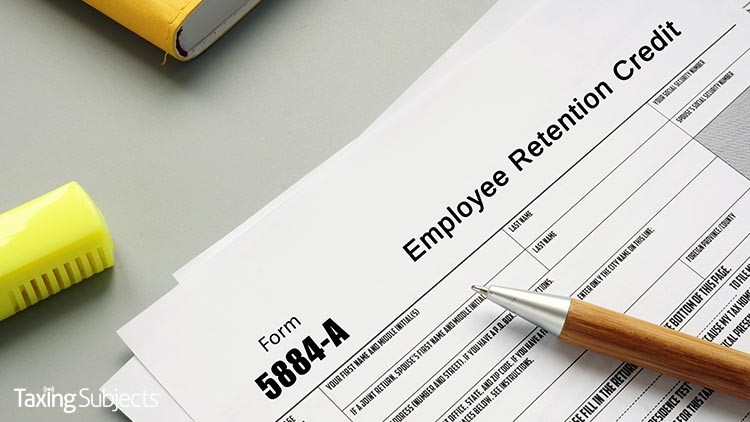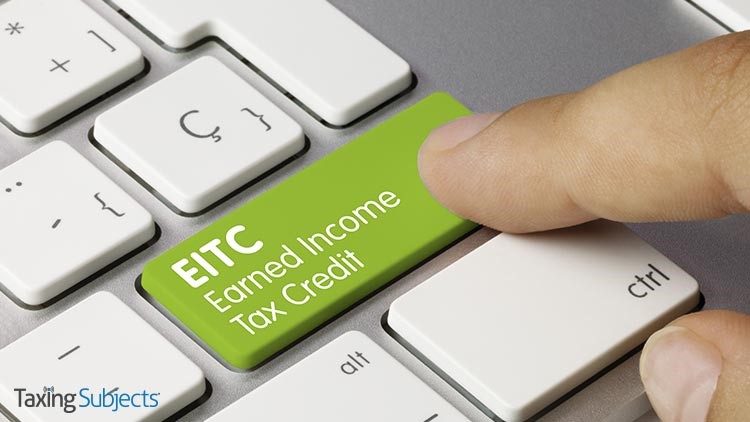by Ameritax | Apr 28, 2021 | Tax Tips and News
The Internal Revenue Service has released guidance for changes to the Child Tax Credit, Earned Income Credit, and application percentage table (APT) that were included in the American Rescue Plan Act of 2021 (ARPA).
The APT table is used to calculate a taxpayer’s premium tax credit (PTC) and the required contribution percentage that determines whether the taxpayer is eligible for minimum essential medical coverage for the 2021 tax year.
The changes are spelled out in Revenue Procedure 2021-23.
Overview of Changes
ARPA increases the refundable part of the Child Tax Credit for tax year 2021, allowing up to $3,600 for qualifying children younger than six and $3,000 for children ages six to 17.
To qualify for the higher amounts, the taxpayer—or the spouse of a taxpayer filing a joint return—had to have a main home in the U.S. for more than half of the taxable year or was a bona fide resident of Puerto Rico for the year.
There are provisions for partial refunds of this credit in the current Code, but the guidance says those won’t apply for TY 2021 and beyond.
The guidance also modifies existing rules that, for taxable years beginning in 2021, the Earned Income Credit (EIC) will include some special rules. These special rules will encompass eligible taxpayers with no qualifying children, but whose income exceeds the credit’s limit.
ARPA also modifies the Internal Revenue Code to bar taxpayers from receiving the EIC when their total amount of disqualified income is more than $10,000. After Dec. 31, the guidance says, that $10,000 cap will be adjusted for inflation.
The guidance document includes a table showing the various limits under the American Rescue Plan. For example, the complete phaseout amount—the amount of adjusted gross income or earned income, if greater—at which no credit is allowed.
For married couples filing jointly, that cutoff is $21,430 if they don’t have any qualifying children. If they have one qualifying child, their income limit is $42,158; if they have two qualifying children, they can make up to $47,915; and with three children, their income limit for the credit is $51,464.
Interest Rate Changes
ARPA modifies the applicable percentage table in the Code to provide temporary percentages.
The APT is used by taxpayers to figure how much of the Premium Tax Credit they can claim for the year.
One thing not changed by ARPA is the required contribution percentage used to determine if taxpayers and their families are eligible for employer-sponsored medical coverage for 2021: 9.83 percent.
Source: Rev. Proc. 2021-23
– Story provided by TaxingSubjects.com
by Ameritax | Apr 24, 2021 | Tax Tips and News
The early bird gets the worm.
We’re taught that punctuality and working ahead leads to success. While generally holding true, there are obviously some exceptions—like when Congress passes retroactive tax law changes a month after Americans start filing their returns.
Case in point: The Paycheck Protection Program originally did not allow deductions on expenses that were paid for with the proceeds from the loan. That changed when Congress passed the COVID-Related Tax Relief Act of 2020 as part of the Consolidated Appropriations Act that was signed into law on December 27, 2020.
Now, certain expenses paid for with a PPP loan can be deducted, like:
- Payroll costs
- Interest on covered mortgage obligations
- Rent obligation payments
- Utility payments
Unfortunately, some taxpayers filed using the original guidance, meaning they did not claim deductions for which they are eligible.
Given just how devastating 2020 was for small businesses across the country, saying “every little bit counts” is an understatement. Luckily, the IRS yesterday announced a safe harbor that should help.
What does the first-round PPP deduction safe harbor do?
Revenue Procedure 2021-20 includes a safe harbor for first-round PPP loan recipients who filed using guidance issued before the passage of the COVID-Related Tax Relief Act. Under the safe harbor, affected small business owners can claim eligible tax year 2020 expenses on their tax year 2021 return.
Here’s how the IRS generally defines a “covered taxpayer” for the purposes of qualifying for the safe harbor:
- The taxpayer received an original PPP covered loan;
- The taxpayer paid or incurred original eligible expenses during the taxpayer’s 2020 taxable year;
- On or before December 27, 2020, the taxpayer timely filed, including extensions, a Federal income tax return or information return, as applicable, for the taxpayer’s 2020 taxable year; and
- On the taxpayer’s Federal income tax return or information return, as applicable, the taxpayer did not deduct the original eligible expenses because
- The expenses resulted in forgiveness of the original PPP covered loan; or
- The taxpayer reasonably expected at the end of the 2020 taxable year that the expenses would result in such forgiveness.
It’s important to note that this guidance does not apply to second-draw PPP loans.
To learn more about the safe harbor rules—including disallowed expenses and other limitations—check out the revenue ruling on IRS.gov.
Source: IR-2021-91; RP-2021-20
– Story provided by TaxingSubjects.com
by Ameritax | Apr 23, 2021 | Tax Tips and News
The American Rescue Plan Act of 2021 (ARP) allows small and midsize employers—even certain governmental employers—to claim tax credits that reimburse the cost of providing paid sick and family leave related to COVID-19 to their workers.
The refundable credits can include the leave taken by employees to receive or to recover from COVID-19 vaccinations. The credits are available for such leave from April 1 through September 30.
The IRS has released a fact sheet that gives additional details about the credits and the employers who qualify for them, as well as directions on how to claim the credits.
The Internal Revenue Service says the credits are available to businesses and tax-exempt organizations that have less than 500 employees, giving them a credit for the paid time off they provide each employee getting the COVID-19 vaccine—and for any time they need to recover from the vaccine.
If an eligible employer offers employees a paid day off to get vaccinated, for example, the employer is qualified to get a tax credit that’s equal to the wages paid to the employees for that day. There are limits, of course.
“This new information is a shot in the arm for struggling small employers who are working hard to keep their businesses going while also watching out for the health of their employees,” said IRS Commissioner Chuck Rettig. “Our work on this issue is part of a larger effort by the IRS to assist the nation recover from the pandemic.”
The paid leave credits in the American Rescue Plan specifically target the employer’s share of Medicare tax. Since the credits are refundable, an eligible employer can be refunded the full amount of the credit if it’s more than the amount of their Medicare tax.
The IRS says the credits can be claimed on Form 941, Employer’s Quarterly Federal Tax Return, outlining two situations involving eligible employers:
- In anticipation of claiming the credits on the Form 941, eligible employers can keep the federal employment taxes that they otherwise would have deposited, including federal income tax withheld from employees, the employees’ share of social security and Medicare taxes and the eligible employer’s share of social security and Medicare taxes with respect to all employees up to the amount of credit for which they are eligible. The Form 941 instructions explain how to reflect the reduced liabilities for the quarter related to the deposit schedule.
- If an eligible employer does not have enough federal employment taxes set aside for deposit to cover amounts provided as paid sick and family leave wages (plus the eligible health plan expenses and collectively bargained contributions and the eligible employer’s share of social security and Medicare taxes on the paid leave wages), the eligible employer may request an advance of the credits by filing Form 7200, Advance Payment of Employer Credits Due to COVID-19. The eligible employer will account for the amounts received as an advance when it files its Form 941, Employer’s Quarterly Federal Tax Return, for the relevant quarter.
The IRS closes the release by reminding that a comparable benefit is available to self-employed taxpayers, who would file Form 1040, U.S. Individual Income Tax Return to claim the credits.
Sources: American Rescue Plan tax credits available to small employers to provide paid leave to employees receiving COVID-19 vaccines; Under the American Rescue Plan, employers are entitled to tax credits for providing paid leave to employees who take time off related to COVID-19 vaccinations.
– Story provided by TaxingSubjects.com
by Ameritax | Apr 21, 2021 | Tax Tips and News
The Internal Revenue Service has issued guidance aimed at employers who claim the employee retention credit (ERC).
The ERC was created by the Coronavirus Aid, Relief, and Economic Security Act (CARES Act), but its terms were changed by subsequent legislation. The changes applying to the first and second quarter of this year are laid out in IRS Notice 2021-23.
The alterations include:
- the increase in the maximum credit amount
- the expansion of the category of employers that may be eligible to claim the credit
- modifications to the gross receipts test
- revisions to the definition of qualified wages
- new limits on the ability of eligible employers to request an advance payment of the credit
The IRS reminds that the ERC is a refundable credit that can be claimed by eligible employers against their share of Social Security tax. That share will equal 70% of the qualified wages the employer paid to employees from Dec. 31, 2020, through June 30, 2021.
Language in the CARES Act—and later modified by the Taxpayer Certainty and Disaster Tax Relief Act of 2020—sets the limit on qualified wages at “$10,000 per worker per calendar quarter in 2021.” That means the employee retention credit is capped at “$7,000 per employee per quarter,” or “$14,000 total for the first two quarters of 2021.”
Claiming the Employee Retention Credit
The IRS says that small employers can still request an advance on the ERC in 2021, though larger employers cannot. Here’s one way that process can work:
“Small employers may request advance payment of the credit on Form 7200, Advance of Employer Credits Due to COVID-19 after reducing deposits,” the IRS explains. “[Though] some limits and eligibility requirements apply.”
Notice 2021-23 has instructions for calculating and claiming the employee retention credit in Q1 and Q2 of this year. However, guidance for the rest of 2021 is still in the works, so stay tuned for new guidance from the IRS and the Department of the Treasury.
Sources: Claiming the employee retention credit in the first and second calendar quarters 2021; Notice 2021-23.
– Story provided by TaxingSubjects.com
by Ameritax | Apr 20, 2021 | Tax Tips and News
The nation’s Taxpayer Advocate wants taxpayers to know there’s a downside to having too much of a good thing. In this case, it refers to making excessive or improper claims to qualify for a number of tax credits.
The downside is that the IRS has the ability to ban a taxpayer from claiming any of the credits for two years if the credit was improperly claimed through the taxpayer’s “improper or intentional disregard of rules and regulations.”
If the credit was claimed fraudulently, the ban could last up to 10 years.
Taxpayers penalized with such a ban are prohibited from claiming the Earned Income Tax Credit (EITC), the Child Tax Credit (CTC), the American Opportunity Tax Credit (AOTC) and the credit for other dependents (ODC) during the ban period.
The Internal Revenue Manual (IRM) lays out the procedures to impose a ban in IRM 4.19.14.7.1, (12-11-2019). 2/10 Year Ban – Correspondence Guidelines for Examination Technicians (CET).
TAS wants taxpayers to avoid a ban
Rules for claiming the refundable credits are similar—but not the same. The Taxpayer Advocate Service says knowing these rules can keep taxpayers out of trouble:
- Allowable EITC and CTC is a function of a taxpayer’s earned income or “modified adjusted gross income” and the number of “qualifying children” in the household.
- A “qualifying child” is a person who, among other things, meets age requirements, bears a specified relationship to the taxpayer, and has the same principal residence as the taxpayer for more than half the year.
- The EITC and CTC age requirements differ, and disabled dependents (regardless of age) may meet the definition of a qualifying child for the EITC, but not for the CTC.
- The amount of allowable AOTC:
- is a function of “modified adjusted gross income” (like the CTC); and
- is only partially refundable (like the CTC but unlike the EITC).
- The ODC is available for certain “dependents” who are not eligible to be claimed for the CTC.
The Taxpayer Advocacy Service says the residency requirement trips up many taxpayers who incorrectly claim a child who does not actually qualify as their dependent.
Here’s a list of documents the IRS says taxpayers could use to verify residency in an audit: What to Do If the IRS Audits Your Claim.
What can taxpayers do if the IRS seeks a ban?
Taxpayers who are faced with a possible ban on these refundable credits still have rights. Let’s say a taxpayer has one or more of the credits disallowed on a 2020 return, and the IRS wants to impose a ban.
The first time the IRS conducts an audit and seeks a ban, they are required to speak to the taxpayer before moving forward. The IRS also must record the manager’s approval of the ban on its Correspondence Examination Automation Support (CEAS) database.
From there, the TAS says there are four basic options available to taxpayer:
- Agree: A taxpayer may agree to the proposed additional assessment and ban.
- Disagree: If a taxpayer does not agree and does not seek a conference with the IRS Independent Office of Appeals (or does not prevail in an Appeals conference), the IRS will issue a statutory notice of deficiency.
- Tax Court: Upon receipt of a statutory notice of deficiency, a taxpayer may seek review of the IRS’s determination to impose additional tax in the United States Tax Court. However, it’s not clear whether the Tax Court has jurisdiction to consider whether the ban was properly imposed. I recommended that Congress clarify the Tax Court’s jurisdiction in ban cases in the 2020 and 2021 National Taxpayer Advocate Annual Report to Congress Purple Books.
- Audit Reconsideration: Once the ban has been imposed, the IRS sends Notice CP 79A, We Denied One or More of the Credits Claimed on Your Tax Return and Applied a Two-Year Ban, reciting that it denied one or more credits claimed on the return and applied a two-year ban. A taxpayer can then ask the IRS for audit reconsideration of the audit findings. (See IRM 4.13.3.17, Audit Reconsiderations EITC 2/10 Year Ban, for those procedures.) In a typical audit reconsideration, the taxpayer believes that the audit resulted in an inappropriate increase in tax liability and requests the IRS to reevaluate the audit findings. Audit reconsideration is an informal process and a highly effective tool for taxpayers and should be considered as an option to resolve the issue. There is no specific time limit for requesting audit reconsideration, but there are deadlines for requesting refunds.
Bans are sometimes launched from shaky ground
In 2019, the Taxpayer Advocate Service published the Annual Report to Congress Research Study. In it, they examined the cases of 3,831 taxpayers who received credit bans as a result of IRS audits of 2016 tax returns. Here are the TAS’s findings:
- 54 percent of the time, the bans lacked the required managerial approval;
- 84 percent of the time, the attached Form 886-A did not explain why the ban was imposed; and
- 61 percent of the time, the IRS did not speak to taxpayers in the sample being audited for the first time before imposing a ban, as required by the IRM.
Lastly, the NTA recommends a public education campaign to ensure taxpayers—and tax professionals—are aware of the rules associated with the credits and how they are reported.
Sources: Erroneously claiming certain refundable tax credits could lead to being banned from claiming the credits; Study of Two-Year Bans on the Earned Income Tax Credit, Child Tax Credit, and American Opportunity Tax Credit.
– Story provided by TaxingSubjects.com






 Ameritax
Ameritax